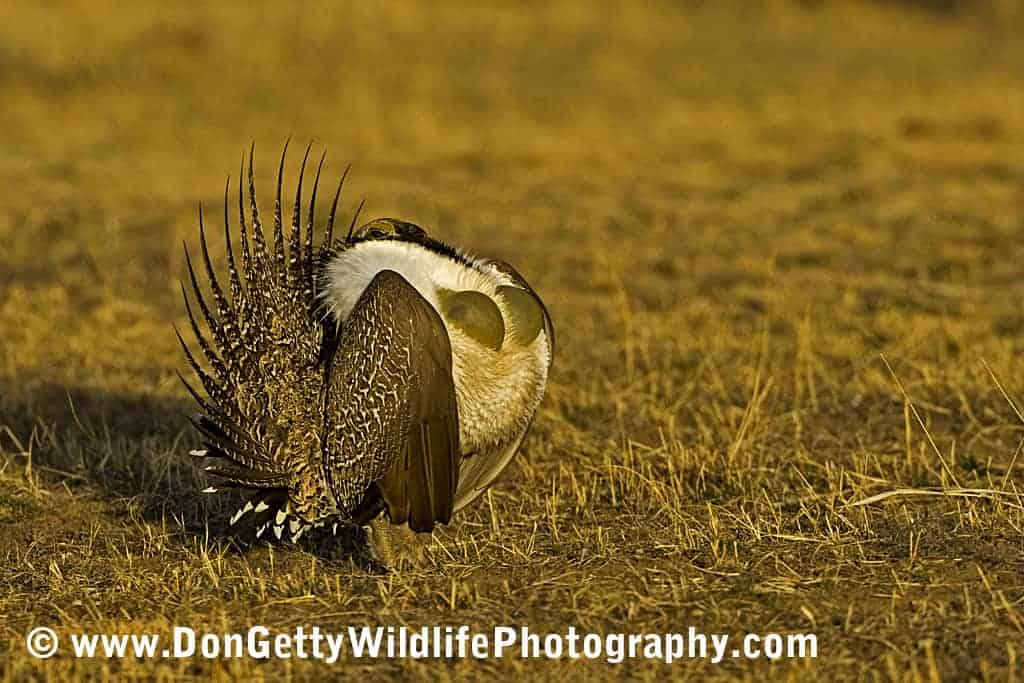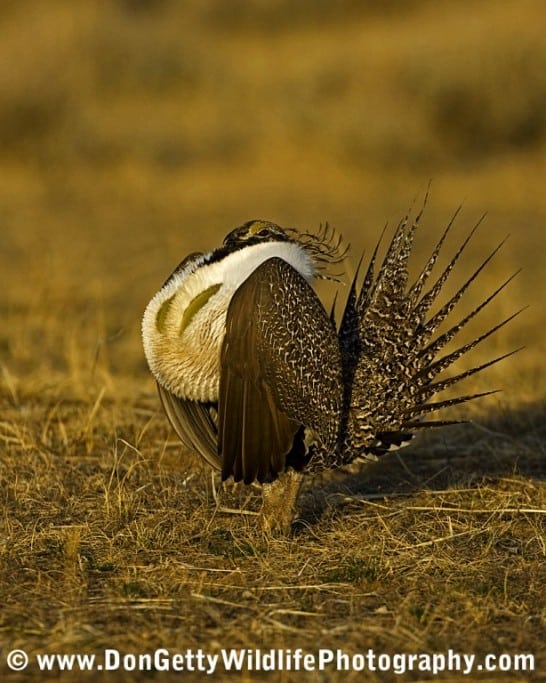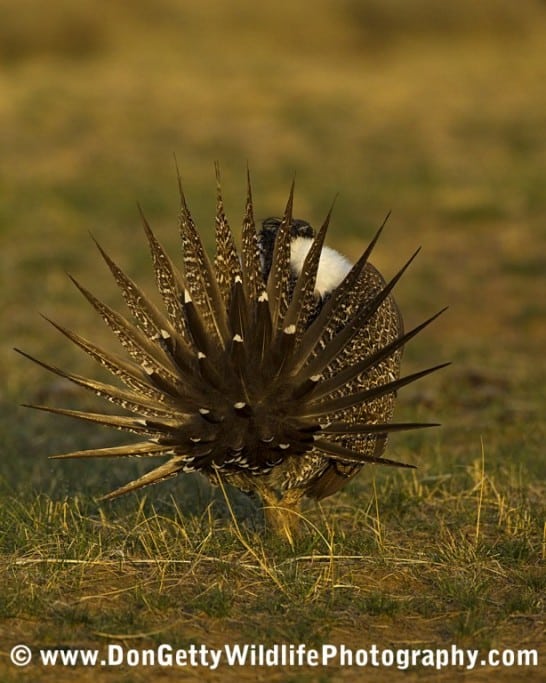
There is no surer sign of spring in the American West than the Greater Sage-Grouse (Centrocercus urophasianus) strutting their stuff on their breeding grounds, known as leks.
The Grouse return to traditional leks year after year. Males display two inflated yellow air sacks on their throats and spread their long pointed tail feathers to attract potential mates.
The Greater Sage-Grouse is the largest American grouse species, with large males weighing over 6 pounds. The current estimated population is now only 500,000 compared to an estimated 16 million a century ago. The decline is attributed primarily to loss of habitat, as is the case with so many other species. The Sage-Grouse are dependant on mature sagebrush habitat. To an urban-dweller driving through the high-desert of the American West, it may appear to be pristine because of the low human population density, however, livestock grazing, energy development and agriculture have taken their toll.

I’m fortunate to have leks in the area near where I live. To photograph the grouse I arrive at a lek well before dawn. Sunrise is when the males display their courtship behavior. I photograph using my vehicle as a blind and do not drive away until the sun is high and the grouse have left the for the day. This minimizes the impact of my presence.


Have a great spring.
Don Getty
For more of Don’s photographs, please go to http://www.DonGettyWildlifePhotography.com/
Don Getty
Don Getty has been an avid wildlife photographer for over 20 years. He resides in Wyoming, just 30 miles from Yellowstone Park. He photographs birds, mammals, reptiles and just about any living creature he can get in front of his lens. Wildlife photography has taken him throughout the Rocky Mountain region of the US and Canada, East Africa, South Africa, Costa Rica, Florida and Churchill Manitoba. He has received numerous awards and his images have appeared in many magazines, books and calendars.
- Web |
- More Posts(17)
Leave a Reply